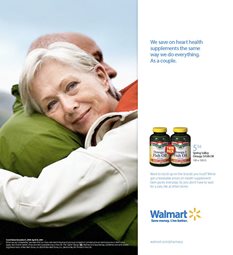
The BA Group
July 28, 2021
What Is Brand Awareness?
In short, brand awareness is a marketing term used to describe the degree in which consumers are familiar or aware of your product or service. That might sound like a bit of a vague concept –because it is. There is not a great way to measure success of brand awareness. You can make some assumptions based on surveys, direct interviews, increased traffic, or Google trends. But these are not concrete numbers. I am sure if you are someone that gauges success on numbers and statistics, that might be a hard pill to swallow. But just because it can’t be easily measured does not mean it isn’t an important part of marketing.
Why is Brand Awareness Important?
Today the world is saturated with hundreds of banks, credit unions, and fintechs all providing the same loan, checking and savings products you are. So how do you stand out? What sets you apart from the others? You want your membership and potential members to know your brand so well that it is the first thought they have in their mind when they are ready to get that auto or toy loan, finance or refinance their home, or change their primary FI.
Think about it.
The last time you cut your finger, you reached for a Band-Aid, right? The last time you sneezed, you probably grabbed a Kleenex. When you needed to look something up, I bet you Googled it.
Notice how some of the above words are capitalized? That’s because they are brands, not nouns or verbs. These terms are known as proprietary eponyms. In other words, when a brand has become so synonymous with its product, people replace generic terms for similar products in our language and use the well-recognized branded name to refer to that product.
Most companies, let alone credit unions, will never reach the ultimate level of recognition of proprietary eponym, but that doesn’t mean that your brand awareness isn’t important or that there are not things you can do to boost your brand awareness.
How to Establish Brand Awareness
Brand awareness is something that has to be built, it does not happen overnight. It also won’t happen from a single marketing campaign or advertisement.
Strong brand awareness occurs when multiple marketing efforts occur concurrently and consistently and go beyond selling a product. These efforts go beyond the promotional rate or hard benefits of your offerings. Instead, they tell a story.
A great example of a brand that doesn’t just focus on their products, but rather their brand story, is Nike. Most of their ads do not focus a specific product, but on the emotional connection with their target audience (especially in their videos). Their mission statement /brand promise is to “Bring inspiration and innovation to every athlete in the world. *If you have a body, you are an athlete.” That’s a powerful statement which allows their brand (and products) to reach and grow beyond their current place in the market.
Below is an example of a Nike ad, where there is no product present, it’s completely built around brand equity and the emotional connection to their audience.

Create Consistency
In order for a brand to become recognizable there has to be consistency. You need to not only use your logo as an identifier, but in your marketing, you have to build a coherent look, feel, and voice.
All of the above items should be established in your brand guidelines or style book. This will set the tone for all marketing moving forward.
In addition, you should also include:
- Your brand story or mission statement
- Guidelines for logo usage
- Guidelines for language use
- Guidelines for graphic & photo use
- A color palette
- Typography
- Creative examples
Give Your Brand a Personality
How would you define your brand? Fun? Intellectual? Sporty? The personality is up to you as long as it is unique, consistent over time, and not just something you made up because it “sounded or looked good” – but because your credit union IS that brand and can live up to it today, tomorrow, and for years to come. The personality you give your brand will help differentiate you from your competitors, whether they’re a bank, credit union or fintech.
Take for example Target and Walmart, both are box retail stores selling similar products. They even share similar tag lines, focusing on value and fulfillment, Target’s being “Expect More. Pay Less” and Walmart’s “Save Money. Live Better”. However, the store personas are what really set Target and Walmart apart. Target strives to reach a younger, trendier customer that wants great designs at a great price. While Walmart tends to target an older, more conservative, value focused demographic that want a great deal – period.
Check out these examples of each stores’ ads. While the 2 stores a very similar in all aspects, their messaging and marketing personalities could not make them feel more different.


Tell a Story
By creating a narrative around your brand, you humanize it and give it depth. Your audience has something real to latch onto.
Your narrative can be whatever you want it to be as long as it is authentic. Tell the story of how your business began, the struggles they have overcome, or how they give back to the community. Anything that is true to your brand, but also emotionally driven and connects with your target members.
You Have a Strong Brand — Now What?
Now that you have a strong brand, it is time to put it to work.
Once you have discovered who you are as a credit union, the message you want to put out there, and established a look to support all of it, you want to get in front of your members and potential members.
Choose the Right Channels
There are numerous marketing channels available, however, this doesn’t mean you should be using all of them.
You need to find out where your target member is so that you can get the most bang for your buck.
Some social platforms attract a younger “hip” demographic. If you target member skews older, it may be a better decision to put your marketing in a different channel.
The crucial thing is to do your research and find out where your target demographic is. This way you are putting your marketing efforts into the channels that will have the biggest impact.
Make it Sharable, Local & Searchable
No matter what you are sell, offering, or your marketing strategies – your target member needs to be able to easily share your content. This could be in the form of a blog post, sponsored content, videos, and/or social media posts. It doesn’t matter what it is, as long as it is shareable.
Word-of-mouth marketing is the most trustworthy form of marketing, with one study stating 90% of respondents trust brand recommendations from friends.**. So when you see people you trust sharing products or services, you’re more likely to take notice of the product and brand. Maybe you like what you see and want to learn more about it. What other products do they have? What are their social accounts like?
If you make content sharable, your members will help you do your job of building brand awareness just by simply clicking “share”.
When your word-of-mouth marketing starts working you want to ensure that potential members can find you. Make sure your local SEO efforts are up to date by checking your Google My Business profile for accuracy.
Additionally, you need to ensure your site is SEO optimized so that those organic (and paid) searches will allow your site to receive its best placement possible.
Don’t Forget Offline Campaigns
The digital world is so accessible that you might believe nothing else matters. However, that isn’t the case. Traditional forms of media are still valuable marketing platforms.
Traditional advertising, when used strategically, can be a great way to compliment digital channels when showcasing your identity, and with the help of ever-evolving technology, it can be used much more efficiently and affordably than you may realize.
Marketing campaigns utilizing radio, TV, direct mail, posters, billboards, brochures, and print publications still exist, and still have a place in your marketing efforts – again, when used strategically.
Over to You
Brand awareness is extremely powerful and can have a major impact on your marketing efforts, but it doesn’t have to be unnerving. The most important things to remember are:
- The importance of brand awareness is to help your target demographic remember your credit union, especially when it comes to time for a loan, FI switch or recommendation!
- The way you get your brand out there is just as important at the brand itself
- Brand awareness is NOT one and done. You have to keep building on your brand - trying new strategies, marketing channels and mixes, as well as evolving your target audience(s) as you learn and grow
Need help bringing your CU brand to life?
Contact our branding team today!